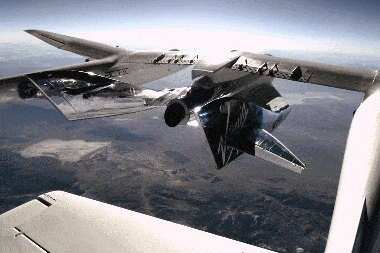This post was originally published on this site

Virgin Galactic shares rose to begin its first day of trading on the New York Stock Exchange, as the space tourism company’s stock began trading publicly following its merger with Chamath Palihapitiya’s venture Social Capital Hedosophia (SCH).
Sir Richard Branson’s company listed directly on the NYSE on Monday, following the merger’s approval and closing last week.
“Virgin Galactic is making history again today as it becomes the world’s first and only publicly traded commercial human spaceflight company. For the first time, anyone will have the opportunity to invest in a human spaceflight company that is transforming the market,” CEO George Whitesides said in a statement.
Sir Richard Branson stands on the floor of the New York Stock Exchange (NYSE) ahead of Virgin Galactic (SPCE) trading in New York, U.S., October 28, 2019.
Richard Branson Virgin Galactic IPO NYSE
Shares of Virgin Galactic rose as much 6% as the market opened. The shares were previously listed under the ticker “IPOA” for Palihapitiya’s special purpose vehicle, which took a 49% stake in Virgin Galactic. Shares of Palihapitiya’s venture closed at $11.79 a share on Friday, up nearly 12% in the past three months.
In essence, Monday’s debut represented a name change for the company, as investors could trade shares of Palihapitiya’s venture since before the merger was announced.
Sir Richard Branson stands outside the New York Stock Exchange (NYSE) ahead of the Virgin Galactic (SPCE) IPO in New York, U.S., October 28, 2019.
Brendan McDermid | Reuters
Special purpose vehicles, also known as SPACs, raise capital to buy an existing company. In Social Capital Hedosophia’s case, Palihapitiya’s SPAC is buying just under half of the company to help it enter the public market. Palihapitiya is the founder of Social Capital and had been an early executive at Facebook.
Branson plans to retain his 51% controlling stake after the debut, he told CNBC during the company’s unveiling of its spacewear collection with Under Armour.
Palihapitiya sees Virgin Galactic as “a business that has software-like margins,” telling CNBC in July that he believes there is a “really compelling risk-reward” behind space tourism. UBS, in a March report, estimated that space tourism has a potential market of $3 billion a decade from now, even though it’s “still at a nascent phase.”
Flying tourists begins next year
With a price tag of $250,000 per person, Virgin Galactic plans to carry as many as six passengers in its spacecraft at a time. Flown by two pilots, spaceship is dropped from a jet-powered aircraft and fires a rocket motor, reaching over three times the speed of sound as it climbs though the Earth’s atmosphere. Then the spacecraft and its passengers float weightless for a few minutes, before gliding back down to land on Earth much like a traditional aircraft.
Virgin Galactic’s spacecraft Unity drops from underneath its carrier aircraft before flying to space in February 2019.
Virgin Galactic | gif by @thesheetztweetz
After years of delays, Virgin Galactic is in the final stages of testing its spacecraft. The company has a list of 603 customers who have paid deposits, some of whom have been waiting for a decade for their chance to fly.
“Because it’s taken so long to get this far I try not to think about the fact that we’re almost there because I have thought about that for a few years,” Branson told CNBC earlier this month.
The company plans to begin flying commercial flights in 2020, with Branson expected to fly on the first one.
Expanding space tourism internationally
Virgin Galactic has testing facilities in California’s Mojave Desert and an agreement with Spaceport America in New Mexico for the first commercial flights. But Branson says that’s just the beginning for the space tourism business, as the company is talking about expanding across several continents.
“Abu Dhabi would like us to do a spaceport there, and we’re in discussions with them,” Branson said. “Italy would like us to do a spaceport there. Great Britain wants us to do a spaceport. Australia talked to us about doing a spaceport.”
Virgin Galactic is also looking to begin operations “in a few other, Asian countries,” CEO George Whitesides said. But perhaps the most fascinating opportunity may be in Scandinavia, as the company is speaking to Sweden about flying into the region’s spectacular night sky.
“We’ve talked about going up into the Northern Lights,” Branson said. “It would be ridiculous.”
As for the company’s first commercial flights, Branson expects to be on the first one — yet left it a mystery as to who else will fly with him.
“We have an announcement to make, so I’m not allowed to talk about it,” Branson said. “Sometime next year I will be taking somebody up, but I will have to let you know.”



